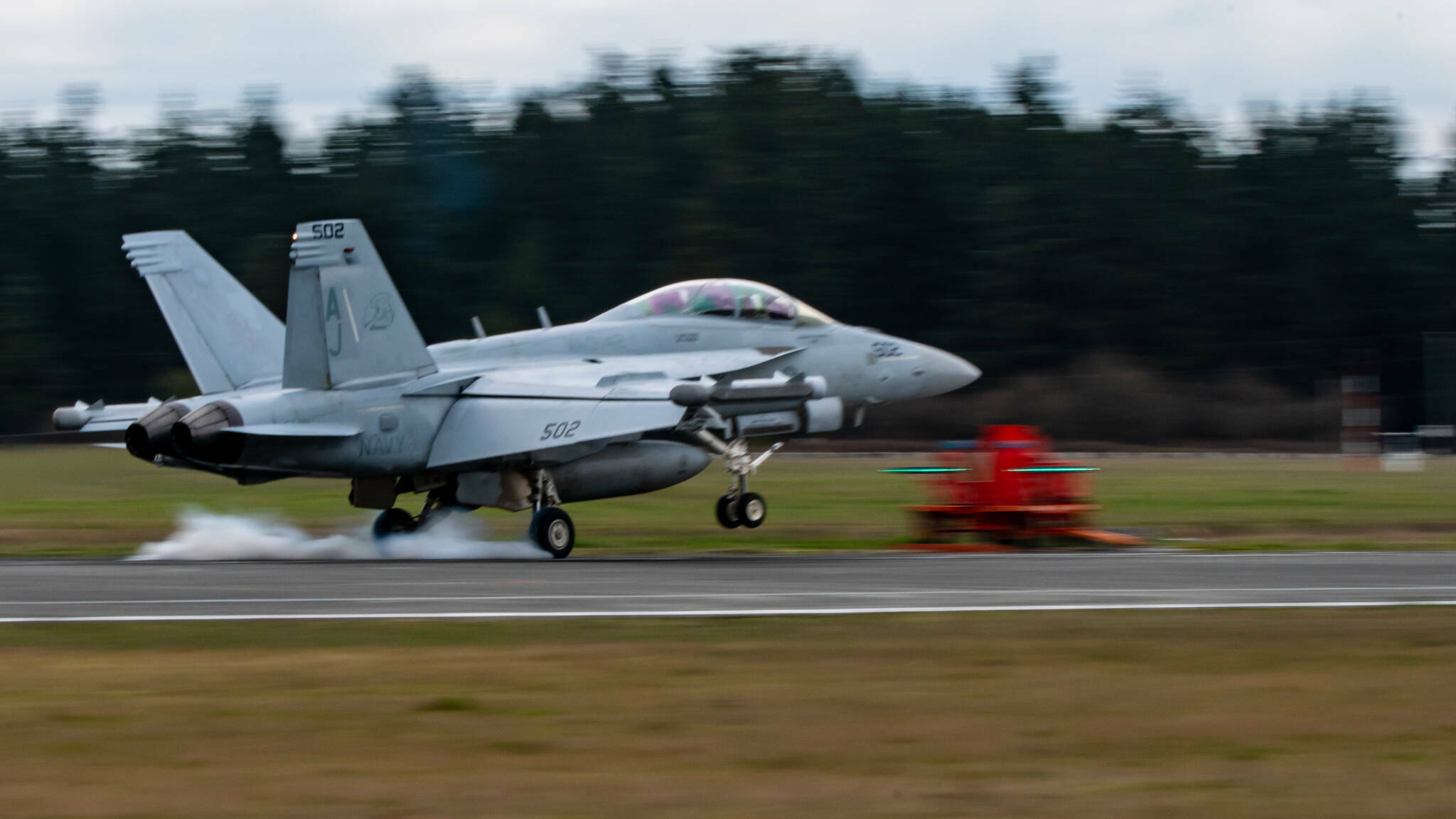An EA-18G Growler jet experienced an engine malfunction while doing touch-and-go exercises at a Navy practice field in Central Whidbey on May 31, according to Naval Air Station Whidbey Island.
While the Navy asserts that “nobody on the ground was in any danger,” a Whidbey Island anti-noise group is pointing to the incident as evidence that siting a Navy practice field in a rural residential area is unwise. Bob Wilbur, president of Citizens of Ebey’s Reserve, pointed out that the troubled aircraft flew over nearby fuel tanks at the Island Transit center.
“It’s another reason to say they should practice where they can land in a situation like this,” he said.
The Navy reported that the malfunctioning aircraft flew near the town of Coupeville on its path to the Ault Field base, which is about 10 miles away.
“Navy aircraft normally avoid Coupeville in accordance with established noise abatement procedures; however, when a malfunction occurs, procedures direct the pilot to fly the aircraft in the safest configuration and direction to handle the emergency,” Navy Public Information Officer Mike Welding wrote in a statement. “That path caused the aircraft to remain on a straight profile along the runway heading which passed near the town of Coupeville. At no point was anyone on the ground in any danger.”
A resident of Pennington Loop in Coupeville, however, reported that the plane traveled directly over the town. The man contacted both Wilbur and the base after the Growler flew low over his home and then headed “directly over the downtown merchant area of Coupeville.”
Another Coupeville resident waiting to turn onto Highway 20 near the Outlying Field heard a loud “metal-on-metal” noise and saw that a Growler taking off northward appeared to struggle, according to Wilbur. The group has identified four people who witnessed the incident and is asking the public for images of the malfunctioning Growler.
The Growler then flew low over the town and headed to West Beach, where a resident called 911 at 2:55 p.m. and reported “it had black smoke coming out of the back of it” and the house shook, according to the dispatch log from the Island County Sheriff’s Office. The resident thought that the plane was going down into the water.
ICOM emergency dispatch center contacted the Regional Dispatch Center for the Navy, which was aware of an inflight emergency and that the plane was flying at low altitude. The Coast Guard and emergency services were also notified.
The Regional Dispatch Center reported at 3:12 p.m. that the aircraft landed safety at the Ault Field base.
Welding wrote that the Growlers’ GE engines are among the safest in the world.
“The Growler is designed to safely operate on a single engine if required,” Welding wrote. “The aircraft in question on May 31 was well above a minimum safe altitude and had a positive rate of climb.”
Opponents of the noisy aircraft are unlikely to be assuaged by the Navy’s reassurances.
“Everyone is thankful a tragic mishap was avoided, but it does raise a serious question about the suitability of the OLF for landing practice,” Sound Defense Alliance board member Maryon Attwood noted in a press release.
COER argues that if the OLF Coupeville runway met contemporary length requirements, then the Growler pilot could have landed there instead of “putting the town of Coupeville at risk.”
The group is also concerned that the malfunction could have been caused by a bird strike, claiming that the Navy doesn’t follow its own bird-strike avoidance guidelines by flying low over the Crockett Lake Wetland Preserve, widely considered to be one of the most important birding areas in Washington state.
As far as mechanical problems, it appears that the only issues with Growlers widely reported by the media occurred five years ago. The Navy investigated dangerous failures in environmental controls in Super Hornets and Growlers after an incident with a NAS Whidbey crew in 2018. That same year, a Growler owned by the Royal Australian Air Force experienced an engine failure during take-off at Nellis Air Force Base and skidded off the roadway before bursting into flames, according to the U.S. Naval Institute. An investigation concluded that the General Electric F414 turbofan engines experienced an uncontained catastrophic failure.



